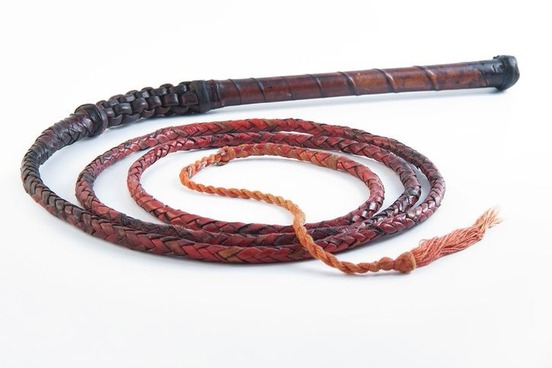
President
The title of president goes back to Latin praesident-, praesidens, meaning "ruler," which, in turn, derives from the present participle of praesidēre, "to guard" or "to preside over." Today, president commonly refers to the chief officer of an organization, such as a corporation or educational institution, who is entrusted with the direction and administration of its policies. In the rarefied world of politics, the title designates the elected official occupying the position of chief of state in a republic.
In countries governed by a parliament, the president has only minimal political power—that's not the case in the U.S., where the president is not only the chief of state but is its chief political executive. As chief executive, he or she must ensure that laws of the land are faithfully executed, which is done through various executive agencies and with the aid of the presidential cabinet; in addition, the president is vested with the power to sign a bill into law or veto one passed by Congress. If that's not enough, the president, when called upon, dons the hat of commander in chief of the armed forces.
Prior to the creation of the office of the presidency of the United States (with the ratification of the U.S. Constitution in 1788), being president wasn't so demanding. In Colonial America, the title president was bestowed on the chief magistrate of some British colonies who were elected by a council. That title was then transferred to the head of the early state governments (as in "President of the Pennsylvanian State"); president in this sense was replaced in all states by governor by the start of the 19th century. Before George Washington, the "President of the United States" was a presiding officer over the Continental Congress and of the Congress established by the Articles of Confederation.
On Monday last the Hon. Elias Boudinot, Esq; was elected President of the United States in Congress assembled.
— The Pennsylvania Gazette, 6 Nov. 1782

Senate
Senate is derived from the Latin word senex, meaning "old" and "old man." Nowadays, you don't have to be old (or a man) to be part of the U.S. Senate—the qualifying age is 30—but in ancient Rome you did: senex gave rise to the noun senatus, which denoted "a council of elders." Senators (as the members came to be called) in the late empire were usually wealthy landowners possessing something similar to feudal authority. In the Middle Ages, senatus was used for the council of a monarch or of a city.
Anglo-French took the word as senat, which was borrowed into 13th-century English. Most of the early references are to the Roman Senate, but by the middle of the 16th century, senate was being used to denote the governing body of a nation. In the 18th century, it was applied to the upper and smaller branch of a bicameral legislature. In 1780, for example, Abigail Adams wrote in a letter: "Hancock will be Governor, by a very great majority; the Senate [of Massachusetts] will have to choose the Lieutenant-governor." Also in the 18th century, the term also began to be used of a governing body (often composed of both faculty and student representatives) at a university or college.

Whip
In the U.S. House of Representatives and Senate, a whip is a person who is appointed by a political party primarily to act as a liaison between the leaders and the other members of the party. The whip's most important duty is counting votes for and against a piece of legislation. Once tallied, the whip reports to the party leader, who then decides if there needs to be some "whipping up" of support for a particular position on the legislation.
The whip is also charged with securing the attendance of party members at quorum calls and at important sessions for voting—in this regard, the whip is much like his fox-hunting namesake. Whip is a borrowing of the name (a.k.a whipper-in) for a person who cracks a whip to drive back the hounds straying from the pack during a chase.
The position of whip was first created in the House in 1897 by the Republican party; the first Democratic House whip was appointed in 1901. In the Senate, the position was established in 1913 by the Democratic party.

Chamber
In Latin, camera originally referred to an arched or vaulted roof or ceiling. By extension, it came to refer to a room in a dwelling, in particular a bedroom. Anglo-French adopted the word in that sense as chambre, which was borrowed into Middle English and became chamber in modern English.
The use of chamber designating a hall in which a deliberative, legislative, or judicial body meets is put into effect in the 15th century. In time, lawmakers gave a physicality to the ideological divide in legislative chambers, resulting in the political designations left and right (and the associated terms leftist, rightist, left-wing, and right-wing). Their meanings originated from the seating arrangement in the chambers in continental Europe. The members who hold more conservative views than others generally sit on the side of the legislative chamber to the right of the presiding officer. Similarly, the members holding more radical views sit on the left side of the chamber.
The origin of the practice of seating legislators this way may stem from the custom of seating honored guests to the right of the host at a formal dinner or gathering. Members of the legislature who were nobles would have been seated to the right in recognition of their titled status. The nobles, in general, held the more conservative views, so conservatism became associated with right and liberal views became associated with left.

Navy Bean
The navy bean is a resilient white bean that gets its name from its use as a ration for U.S. sailors on early naval vessels. The bean was christened with its military appellation circa the mid-1800s.
The bean is commonly used when making baked beans and minestrone soup—as well as a ham-based navy bean soup that is a regular menu item in the Senate's cafeteria.
By most accounts, the Senatorial soup traces back to the early 20th century, but how it originated as a menu item is soupy. Some say that it originated with a request by Idaho Senator Fred Dubois, while others attribute it to Minnesota Senator Knute Nelson. Rather tellingly, the Idahoan's bean soup included mashed potatoes, whereas the Minnesotan’s soup did not; however, Knute's soup did include onion, which follows the recipe of the soup served today. Bet you never expected this unsolved mystery to enter your life, huh?

Cloakroom
The word cloakroom, which harks back to the days when outer garments were called "cloaks," originally denoted a room in which outdoor clothing was stored during one's stay. In the 1860s, cloakroom began being used for an anteroom in the Capitol Building in Washington D.C., where Senators and Congressmen not only stored their coats and personal belongings but went to talk or rest, sometimes with a drink or two.
It was then moved that "all bottles, except those for ink, shall be removed from the cloak-room of the House".... The next day a further resolution was adopted directing the clerk to exclude all spirituous or malt liquors from the hall or rooms attached. Fears are entertained that some members of the House may become dissatisfied with the kind of ink at present furnished, and that the ink-bottle may be converted into an engine of intemperance by being used as a receptacle for whisky….
— The Pall Mall Budget, 21 Feb. 1873
George Rose in his 1868 book The Great Country includes an article from a New York newspaper reporting on a debate between Senators. The reporter recounts that one Senator concluded with a favorite quote "given with a roar ... and a rush to the cloak room amid the shouts and laughter of the House?" An opposing Senator then takes advantage of the Senator's call to nature and mentions that his opposition suggests that, among other things, "all the expenditures should be stopped, except that which could construct for the gentleman an extra watercloset." Now that is a sick 19th-century burn.
Today, each party has its own cloakroom situated off the floor of each chamber. They still are places to schmooze and kick back but also include attendants who keep legislators abreast of any developments concerning upcoming and ongoing legislation, and who take care of the busy legislators' personal requests.

Hopper
The House of Representatives has a connection with some blue-collar workers: part of its duty is to fill a hopper (with material that will benefit the country). In agricultural and construction work, a hopper is a receptacle used for delivering such material as grain, fuel, and coal. During delivery, the machine "hops" to loosen the material inside or to increase its flow. A hopper is also used for separating undesired chaff from a valuable material. It's from these uses that we get the metaphorical expression "in the hopper," implying that an idea or suggestion is or will be in the process of realization or preparation.
With a slate this year that includes the second season of Atlanta, the final year of The Americans and new drama Trust, "I don’t think I've ever felt better about the shows we have in the hopper and that are coming to the market," said [John] Landgraf.
— Adweek, 27 Feb. 2018
We can't say for sure how the box at the House's clerk's desk in which legislators drop their bills came to be called "the hopper"; however, the contents are periodically sorted out with the intention (we hope) of finding something valuable to deliver to American citizens.

Markup
When a bill is introduced in the House of Representatives or Senate, subcommittees are formed to gather information and opinions on it and to investigate its proposals. Their findings are then reported to a standing committee, which votes to either accept or reject it. If accepted, the bill is ordered to be "reported," and a markup session is held, during which the committees further debate and amend the proposed bill. After markup, the standing committee composes a report explaining its decisions and the purpose of the bill. The bill, along with the report, is then filed and sent to the other chamber to be debated and voted on.
According to print evidence, this Congressional use of the noun markup first appears in the 1960s, predating the word's use in publishing for the process of making corrections on copy or proofs by about a decade. Hence, it can be considered the precursor of the computing sense of the word (for the instructional tags added to documents for the processing and formatting of text) that is referred to as "markup language."

Engrossed/Enrolled
An engrossed bill is the version of a bill printed or written in its final form after markup in its chamber of origin. The bill is then certified by either the Clerk of the House or the Secretary of the Senate, depending on its origin, and passed to the other chamber for approval. If a bill is passed by both houses in identical form, the bill is ordered to be enrolled.
The enrolled bill, which includes any changes made and approved by both chambers to the engrossed bill, is then signed by the appropriate officials and submitted to the President to sign (or not sign) into law.
Engross is a 15th-century adoption of Anglo-French engrosser, meaning "to put (a legal document) in final form." The French word is a derivative of the Medieval Latin phrase in grossam, meaning "into form" or, literally, "in large (letter)."
In case you're wondering, the sense of engross meaning "to take or engage the whole attention of" (as in "The Senator was completely engrossed in his Twitter feed") is also from Anglo-French engrosser, but with the meaning of "wholesale" (it's based on en gross, meaning "in quantity").

Cloture
Cloture refers to the ending of a debate on an action or bill by calling for a vote. Sometimes a Congressperson or Senator will attempt a filibuster—usually by making a long speech or a series of speeches, or reading stories by Dr. Seuss—to block or delay the cloture. In such cases, a motion for cloture is invoked and a force vote carried out. By rule, a majority vote for cloture (today, three-fifths of the vote is required) officially ends the filibuster. The U.S. Senate established this rule in 1917, which was first invoked in 1919 to end a filibuster against the Treaty of Versailles.
The word is a borrowing from the French word for "closure." In the French parliament, it is also applied as a legislative term for bringing debate to an end and calling for a vote. The French word ultimately comes from the Latin verb claudere, "to close."





